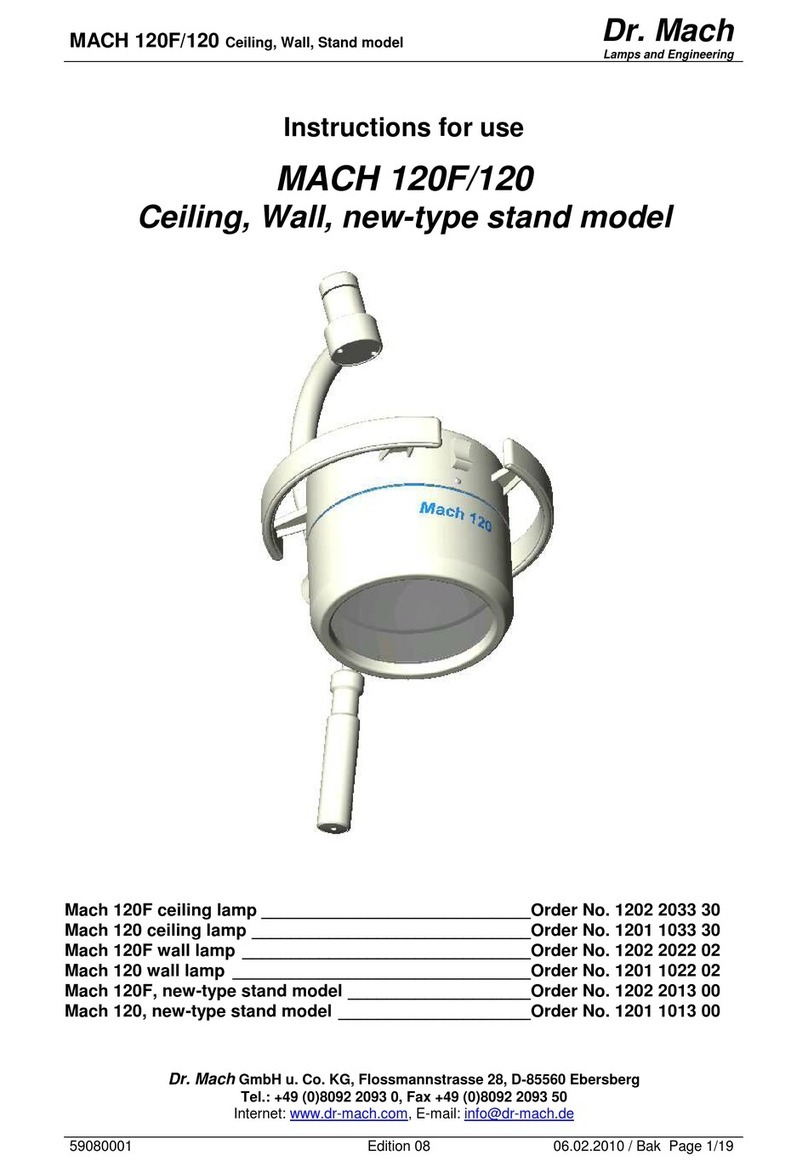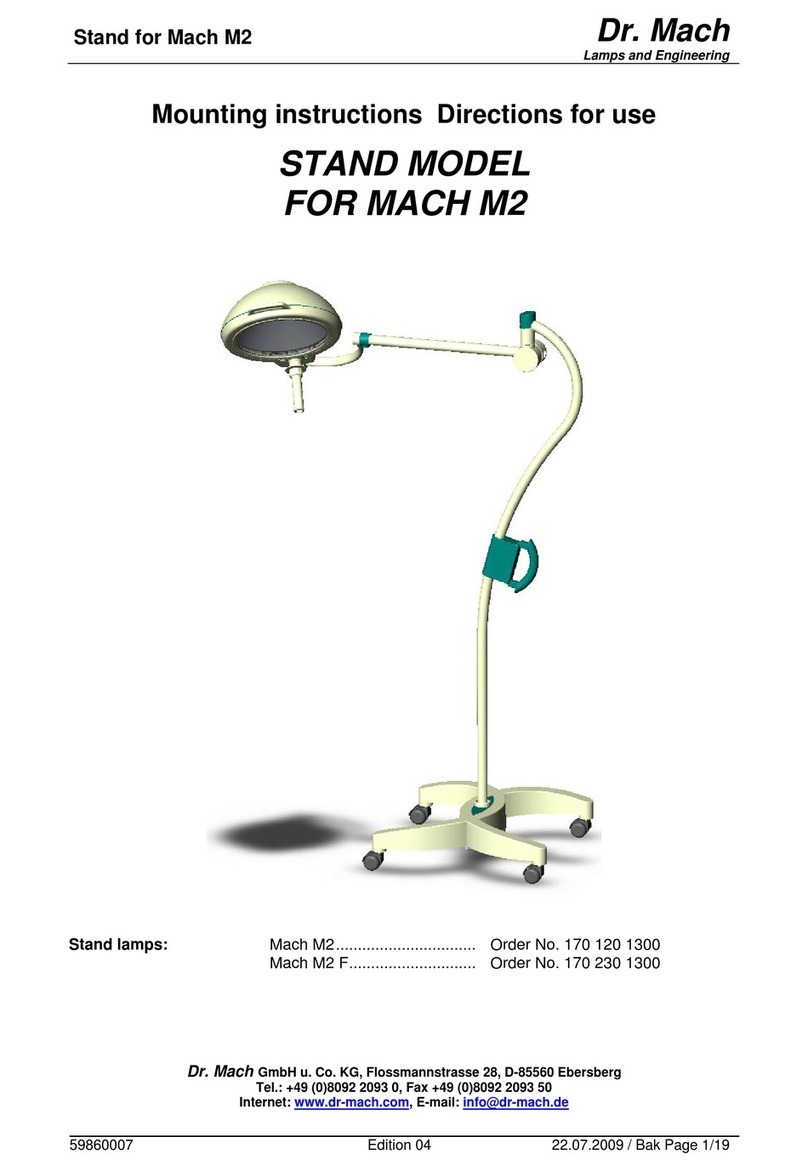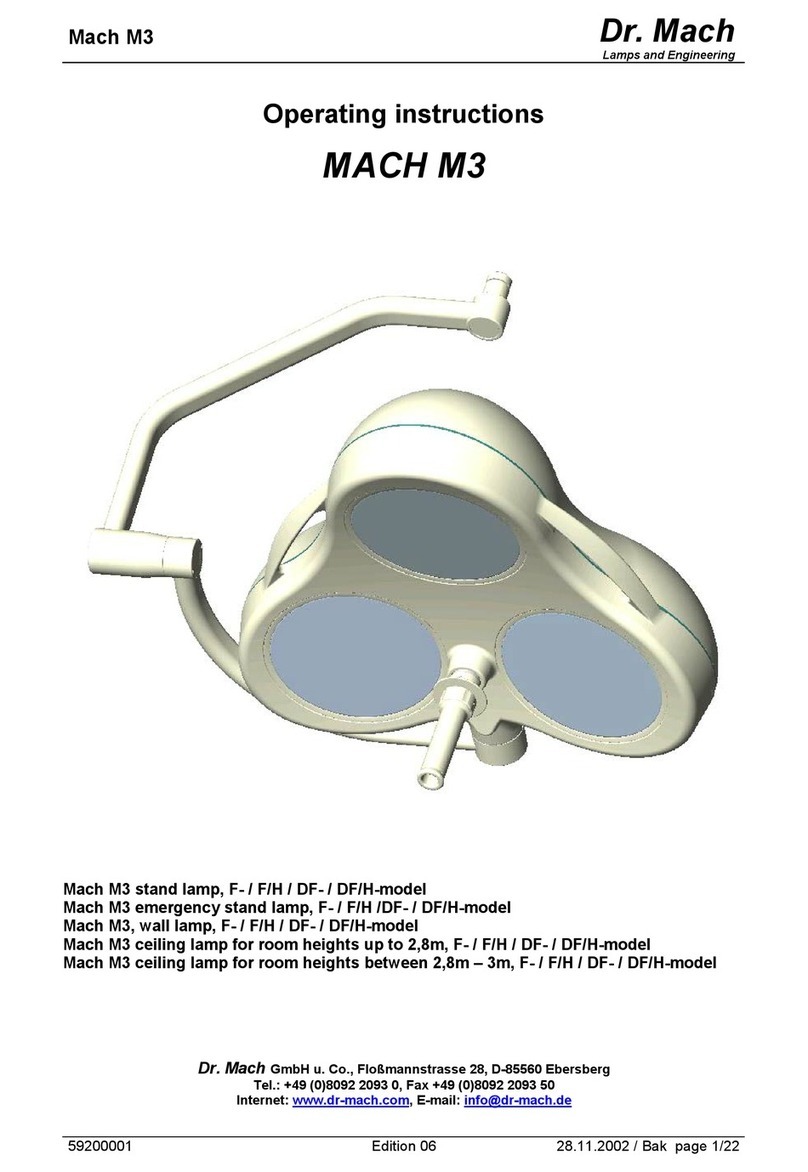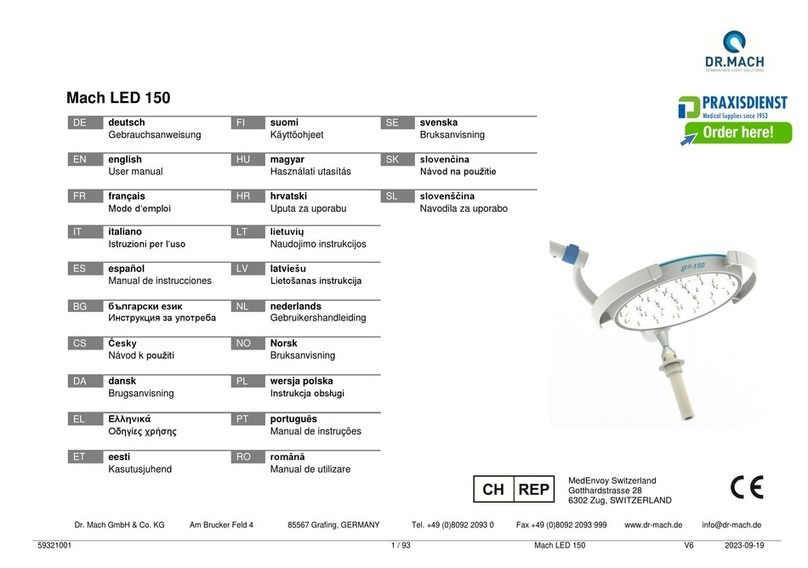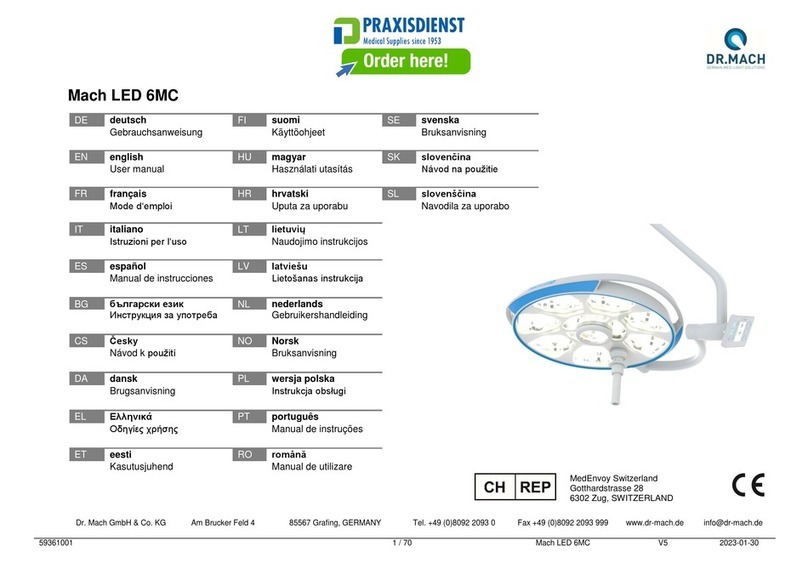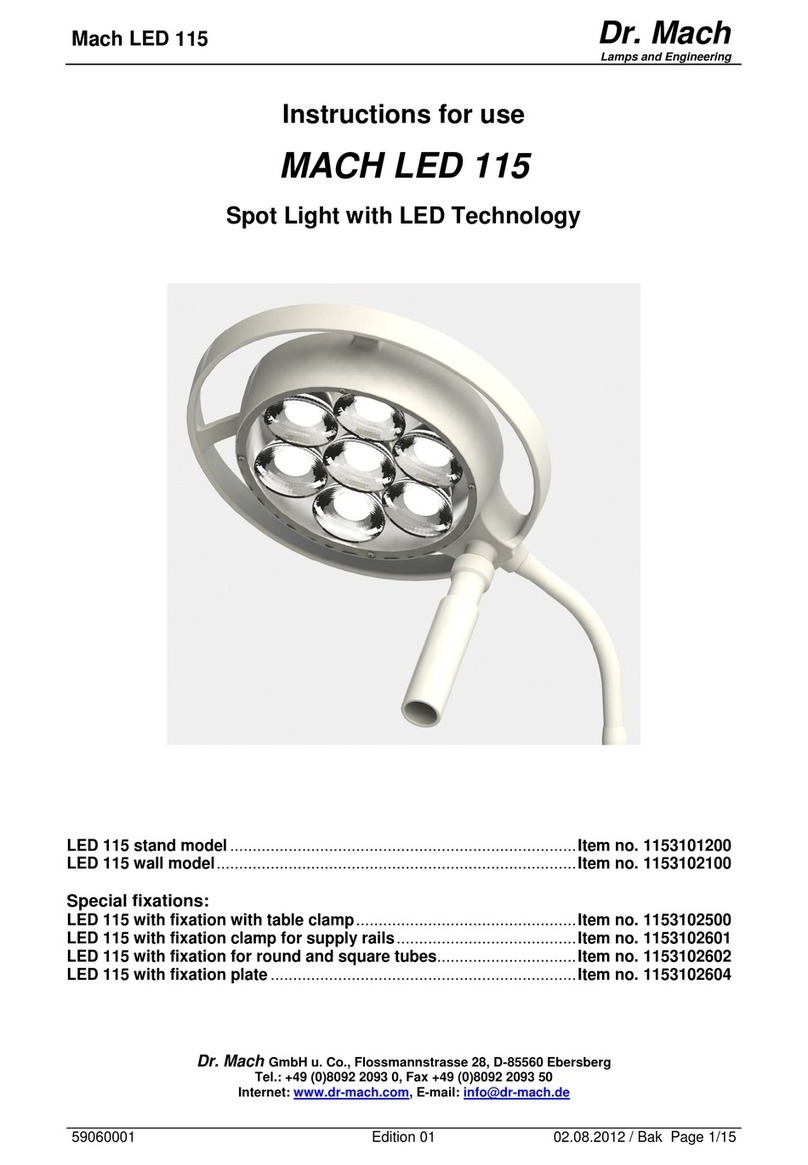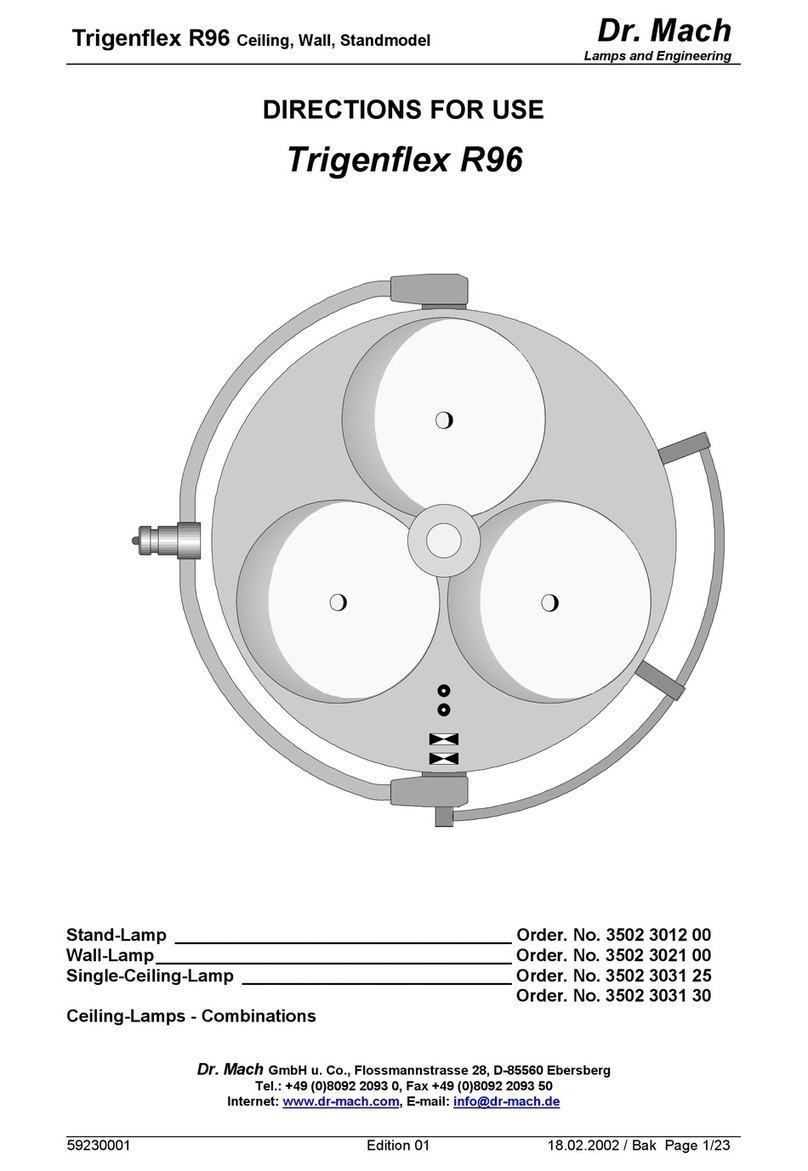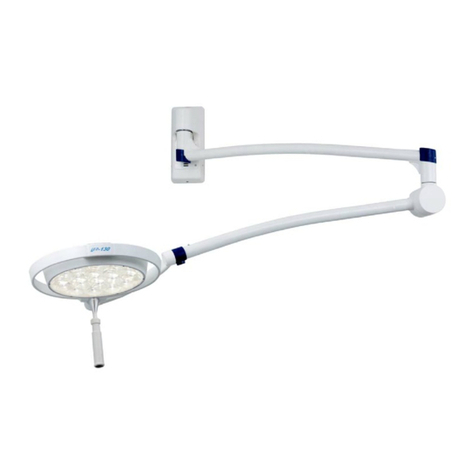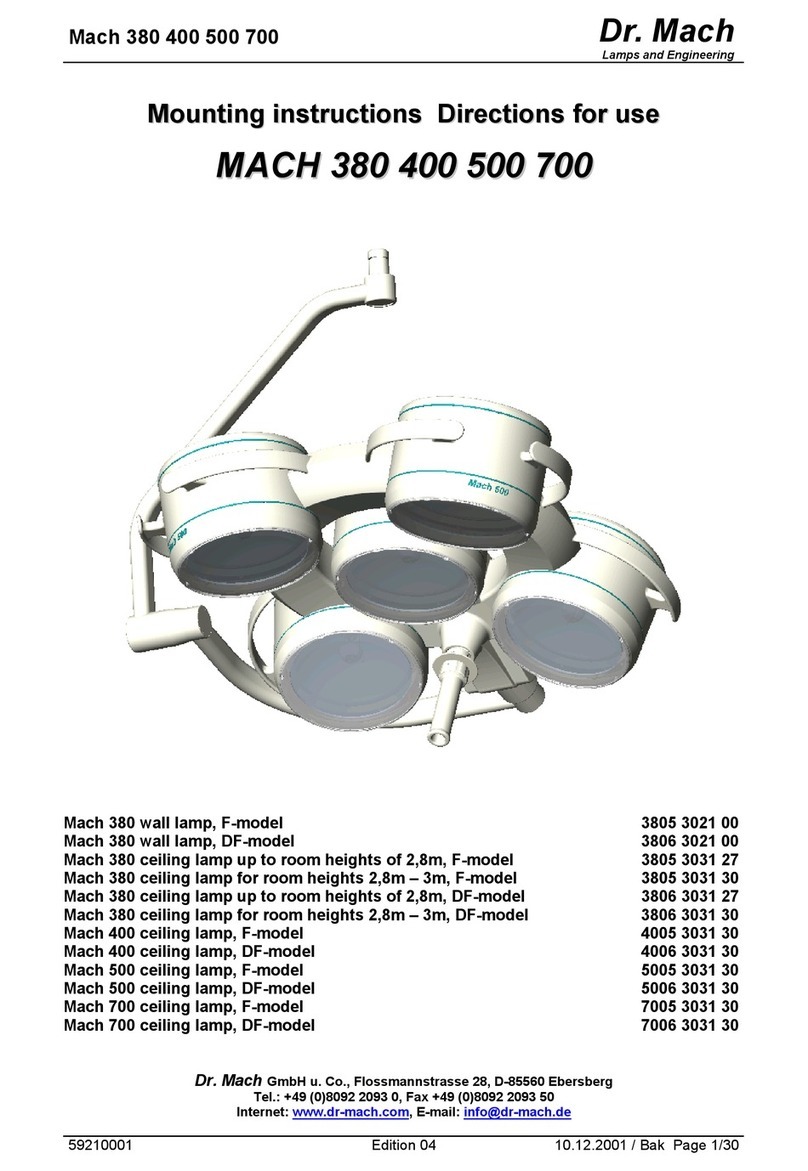
Emergency power lamp Dr. Mach
Lamps and Engineering
59520002_e Edition 13 22.02.2013 / Bak Page 3/25
Instructions for use / operating Instructions
for sealed lead - acid batteries
1. Identification, operating data
Type of battery: BTX 12-24
Block voltage: 12 V Length 166 mm Delivery date: 12-2002
Number of blocks: 2 Width: 175 mm
Number of cells: 12 Height 125 mm Assembly date: 12-2002
Nominal voltage UN24 V Capacity*C20 (1.8 V/cell): 26 Ah#Assembled by: PERL emer-
gency current
Block weight: 9.2 kg Capacity*C10 (1.8 V/cell): 24 Ah
Electrolyte density 1.3 kg/l Capacity*C3 (1.75 V/cell): 20 Ah Commissioning date:
Nominal temperature 20 0C Capacity*C1 (1.75 V/cell): 16 Ah Commissioned by:
Ideal room temperature 20 0C Torque on installation.: 4.5 Nm
Antimony content: <<1 % Torque in service: 3.6 Nm CE-characteristic by: PERL emer-
gency current
Service interval: see 7.2 Ventilation calculation: DIN/EN 50272-
# = Reference capacity (nominal capacity) according to DIN/EN 60896-1 (x V/cell) = Voltage at end of discharge * = for 250C
2. Safety instructions
2.1 Maintenance free / pressure relief valves
The sealed battery blocks require no maintenance. Topping up with water is not allowed. Pressure relief valves are used
as stoppers. Opening them results in the destruction of the battery.
However, the battery requires regular inspection and maintenance (see Section 7).
2.2 Prohibitions, requirements and disposal instructions
1
i
2
3
4
5
6
7
8
Pb
1 Observe the Instructions for Use.
2. When working on batteries wear protective glasses and clothing as
specified in the Accident Prevention Instructions and DIN/EN
50272-2 (VDE 0510).
3. Smoking is forbidden, no naked flames, embers or sparks are
allowed in the vicinity of the battery.
4. There is a danger of explosion and fire so avoid short circuits. Metal
parts of the poles are always live, therefore do not put tools or other
items on the battery.
5. The electrolyte, sulphuric acid, is very corrosive. There is no possi-
bility of contact with the electrolyte unless the battery is damaged
If the casing is defective the electrolyte retained in the
fleece behaves like liquid electrolyte.
6. Any droplets of acid that gets into the eye or on the skin
must be rinsed out or washed off immediately with a
copious supply of water. Then get to a doctor without
delay. If clothing is polluted wash it immediately with
water.
7. Block batteries are heavy. Take care to put them on a
safe base. Only use suitable transport equipment.
8. Old batteries with this sign can be recycled and must be
put through the recycling process. Old batteries, which
are not put through the recycling process should be
disposed of in accordance with all the regulations as
special waste products.
3. Storage
All battery blocks are delivered in the charged condition. If they are not to be put into service immediately but are to be put in store
for a long time they should be stored in a dry, clean and frost free place. Sealed lead acid batteries are best given a trickle charge
when stored. If this is not the case, they must be given an equalisation charge (see Section 6.1.4) at the latest when they sink to
12.5 V open circuit voltage, or every 6 months depending on which occurs first.
4. Commissioning
The ideal operating temperature is 200C. Higher temperatures shorten the life of the battery, lower temperatures reduce
the available capacity. The battery blocks must be so set up, that within the same blocks temperature differences of >30 C cannot
occur. Before commissioning, the batteries should be examined for damage, correct pole connection, solid fit of the connectors (for
torques see table above) and secure contacts. If necessary, pole covers should be fitted. After the charging device and loads are
switched off the correct poles of the battery should be connected to the d.c. supply. Switch on the charging device and charge the
battery as specified in Section 6.1.
The regulations in DIN/VDE 0107, DIN/VDE 0108, DIN/EN 50272-2 (VDE 0510-2) or DIN/VDE 0510-7 as well as IEC 896-2
(DIN/EN 60896-2) should be observed if necessary.
